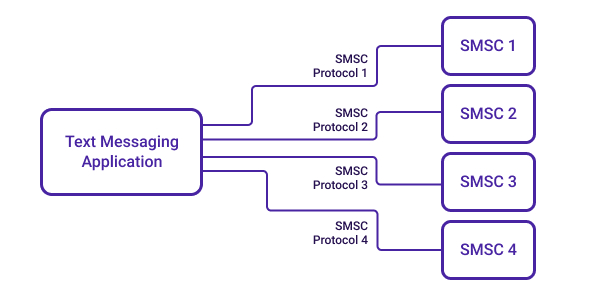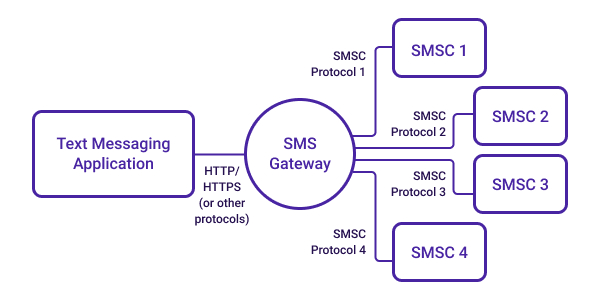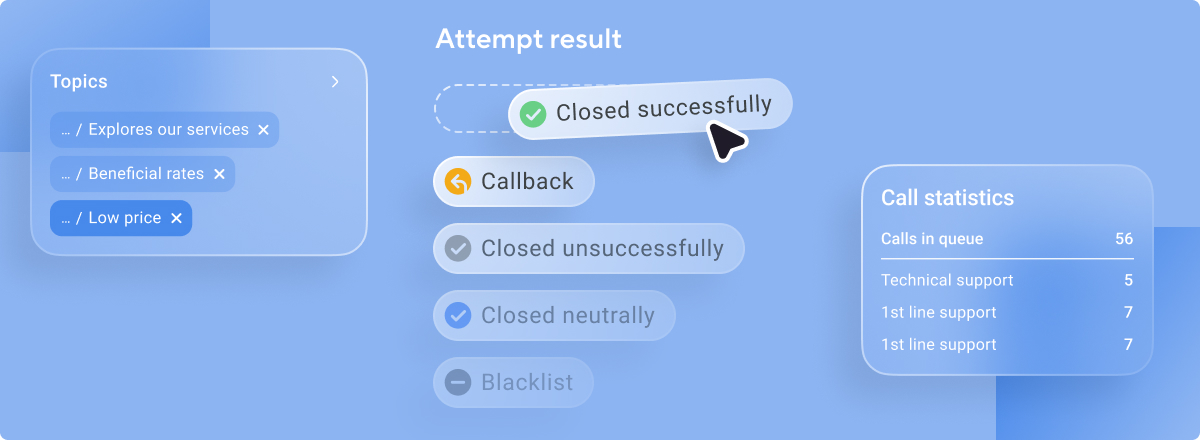With SMS gateways, it’s possible to send bulk SMS messages without a mobile phone. In this article, we explain how SMS gateways work.
An SMS gateway allows users to receive and send SMS text messages from a computer to another SMS compatible device – usually to mobile phones. The SMS gateway translates messages and makes them suitable for sending over the network.
How the SMS Gateway Works
Short Message Service centers or simply SMSCs handle sending and controlling text messages. If the recipient's phone is turned off, SMSCs then hold and send the message when the phone is turned on.
The problem is that SMSCs use different protocols to handle SMS operations over the network. If SMSCs do not support the same protocol, users will not be able to exchange SMS messages. SMS gateways are used to interwork SMSC protocols. Mobile carriers use this approach to connect their SMSCs.

Aside from mobile carriers, SMS gateways are used by developers. Imagine that you are a developer building an SMS text messaging application.
Each mobile carrier purchases its SMSC from infrastructure vendors such as Nokia Networks, Samsung, and Huawei. Once the carrier has this equipment, they then custom it to their needs. This leads to interoperability problems.
To receive and send bulk SMS messages, you need to connect your app to the SMSCs of various mobile carriers. One option is to adapt your app to each SMSC protocol. However, it slows down and complicates the development process.

Conversely, you can use an SMS gateway that handles connections to different SMSCs. SMS gateway settings can usually be modified to support more SMSC protocols. Using an SMS gateway reduces the development time.
Your application only needs to know how to connect to the SMS gateway. Developers use SMPP and CIMD protocols or HTTP/HTTPS interfaces to connect to their SMS gateways. HTTP/HTTPS interfaces are easier to use, whereas SMPP and CIMD protocols provide more features. For instance, HTTP/HTTPS may not allow for pictures to be sent.

SMS Gateway Types
There are three common types of SMS gateways:
- Web2SMS. Allows SMS messages to be sent from websites and web apps to mobile phones
- SMS2Email. Enables your phone number to be connected to an email. When you get an SMS, an email notification is sent. Then, you can send SMS messages via email
- SMS2Skype. Allows for sending and receiving SMS messages to a Skype number
Conclusion
SMS gateways is a useful tool that helps businesses to reach a large group of customers at one time. Fortunately, there are lots of open-source SMS gateway software packages for mobile and web. Developers can easily implement SMS messaging capabilities into services.
Voximplant provides developers with an SMS API that enables code to send messages via the SMS gateway. You can find documentation, code samples, and other developer tools to easily build your messaging app. Sign up for a free developer account and start building today!





